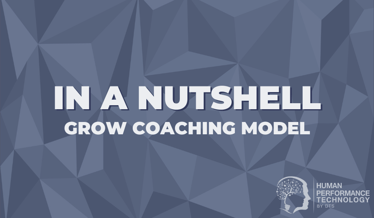The Coaching Bible: Coaching for Performance
In 1978, John Whitmore, a former professional racing car driver, set up a tennis, golf and ski school in the UK based on Inner Game principles that he had adopted from Timothy Gallwey (an Elite tennis coach and best selling author of The Inner Game of Tennis).
He realised that sports coaching had great potential to be applied to business and thus Coaching for Performance was penned in 1992. Coaching for Performance by John Whitmore is considered a 'must-have' for every coach's library and toolkit.
Highlights
- The bestselling bible of the coaching industry.
- Popularised the most influential model of coaching: the GROW model.
- Over 500,000 copies sold worldwide.
Key Reasons for Popularity
- John Whitmore worked with Timothy Gallwey, who are both considered the co-founders of modern business coaching.
- Written in simple, common sense language.
- Applicable for any manager in business.
About the 4th Edition
50 pages longer than the third edition and over 100 longer than the first in 1992.
Divided into 4 Parts
- The Principles of Coaching.
- The Practice of Coaching.
- Leadership for High Performance.
- Transformation through Transpersonal Coaching.
Whitmore begins with self-awareness and responsibility as the foundation stones. Coaching is based on the ancient Socratic principle that you can never really teach a person something, they must learn it for themselves. It is about helping them to become aware of how they do things, and to increase their willingness to be responsible. A traditional boss will tell an employee what they need to do, but a coach-boss will ask brief questions about what is happening in order get the employee to think about it for themselves.
Coaching is really about a way of seeing things: always seeing people through the lens on their potential, not their current performance (and even if the performance is good, you can always get better).
Whitmore introduces a 4 stage coaching model:
- G - Goals.
- R - Reality.
- O - Options.
- W - Will.
Once you are aware of what is possible (Goals) and where you are currently at (Reality), you are ready to explore the alternative routes and strategies (Options) that can get you to your goal. The final set of questions to be answered involve action: once a path has been chosen, who is going to be involved and when will it be done (Will)?
In summary: believe in the potential of people; raise awareness and maintain responsibility through questions and listening; and follow the GROW model. All are the essence of good coaching.
Topics:
Coaching & Mentoring
Theo Winter
Client Services Manager, Writer & Researcher. Theo is one of the youngest professionals in the world to earn an accreditation in TTI Success Insight's suite of psychometric assessments. For more than a decade, he worked with hundreds of HR, L&D and OD professionals and consultants to improve engagement, performance and emotional intelligence of leaders and their teams. He authored the book "40 Must-Know Business Models for People Leaders."


/Coaching%20%20vs%20Psychotherapy.png?width=374&name=Coaching%20%20vs%20Psychotherapy.png)
We Would Like to Hear From You (0 Comments)